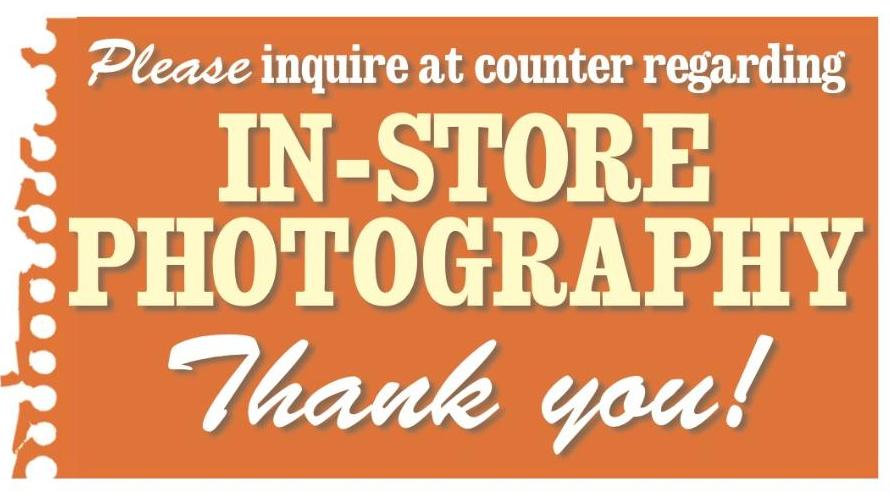Well, I’m not sure this is a battle they can win, but, as Shelf Awareness of 20 December tells us:
“The Golden Notebook, Woodstock, N.Y.*, has an answer for ‘showrooming,’ the habit of some bookstore customers to learn about books at bookstores and then order them online on their phones, sometimes in front of booksellers who just made the recommendation. Last weekend’s experience at the Fountain Bookstore, Richmond, Va., was a timely reminder of this.
 At the Golden Notebook, a sign on the front door reads, ‘Please inquire at counter regarding in-store photography. Thank you!’ As a result, wrote co-owner James Conrad, ‘we have no issue approaching a customer photographing and saying “excuse me, we do not allow in-store photography.” We then attempt a teaching conversation about how we struggle against the internet and how hard we work to find the unique and sometimes extremely hard to find types of titles that reflect our unique community and customers. Usually people are extremely apologetic and sometimes they just say nothing because we basically told them we know exactly what they were doing.
At the Golden Notebook, a sign on the front door reads, ‘Please inquire at counter regarding in-store photography. Thank you!’ As a result, wrote co-owner James Conrad, ‘we have no issue approaching a customer photographing and saying “excuse me, we do not allow in-store photography.” We then attempt a teaching conversation about how we struggle against the internet and how hard we work to find the unique and sometimes extremely hard to find types of titles that reflect our unique community and customers. Usually people are extremely apologetic and sometimes they just say nothing because we basically told them we know exactly what they were doing.
‘The sign also gives people the chance to just ask at the counter first and when they say they have a blog and want to promote us or live far away and can’t carry the hardcover home we say go ahead and photograph! (Just make sure to use an independent bookstore when you get home!)’
Conrad added: ‘Without the sign, you seem rude to mention it, but with it you can have a more polite moment to tell people the importance of small businesses and the struggles we face.'”
Now of course I don’t approve of selecting your books in your local bookstore and then buying them at a discount from Amazon, but while I’m sure a “no photography” sign helps, it can’t ever cure the problem. Once upon a time we didn’t all carry a camera around with us all the time, yet we were able, using that subversive technique called memory, or its lame-brained cousin hand-writing, to achieve a similar result. It’s not the cell phones which cause the problem, it’s the fact that on-line retailers can afford to (need to) use discounts to attract custom. Either we have to accept the fact that a proportion of the customers moving through will end up buying elsewhere at the lowest on-line price, or take up arms against the pathology, and offer discounts too. The discount doesn’t have to match Amazon’s, just something, so that people can feel they’ve negotiated a deal. Better to have more traffic than to miss sales surely. Some kind of straight-forward appeal on the subject next to the check-out counter might encourage many buyers to pay the full price: after all, people do buy books from bookstores at full price, and they must by now all be people who are fully aware of the fact that they could get the thing for less elsewhere.
Here comes a story from Vox (via BookRiot) suggesting that social media have in some cases been good for bookstores. Just reinforces the point that it’s people not technology that make the issue (and can overcome it).
See also Showrooming.
_______________________
* An employee at The Golden Notebook is one of 333 individual booksellers to receive a Christmas bonus of $750 from 2018’s top-earning author James Patterson.









